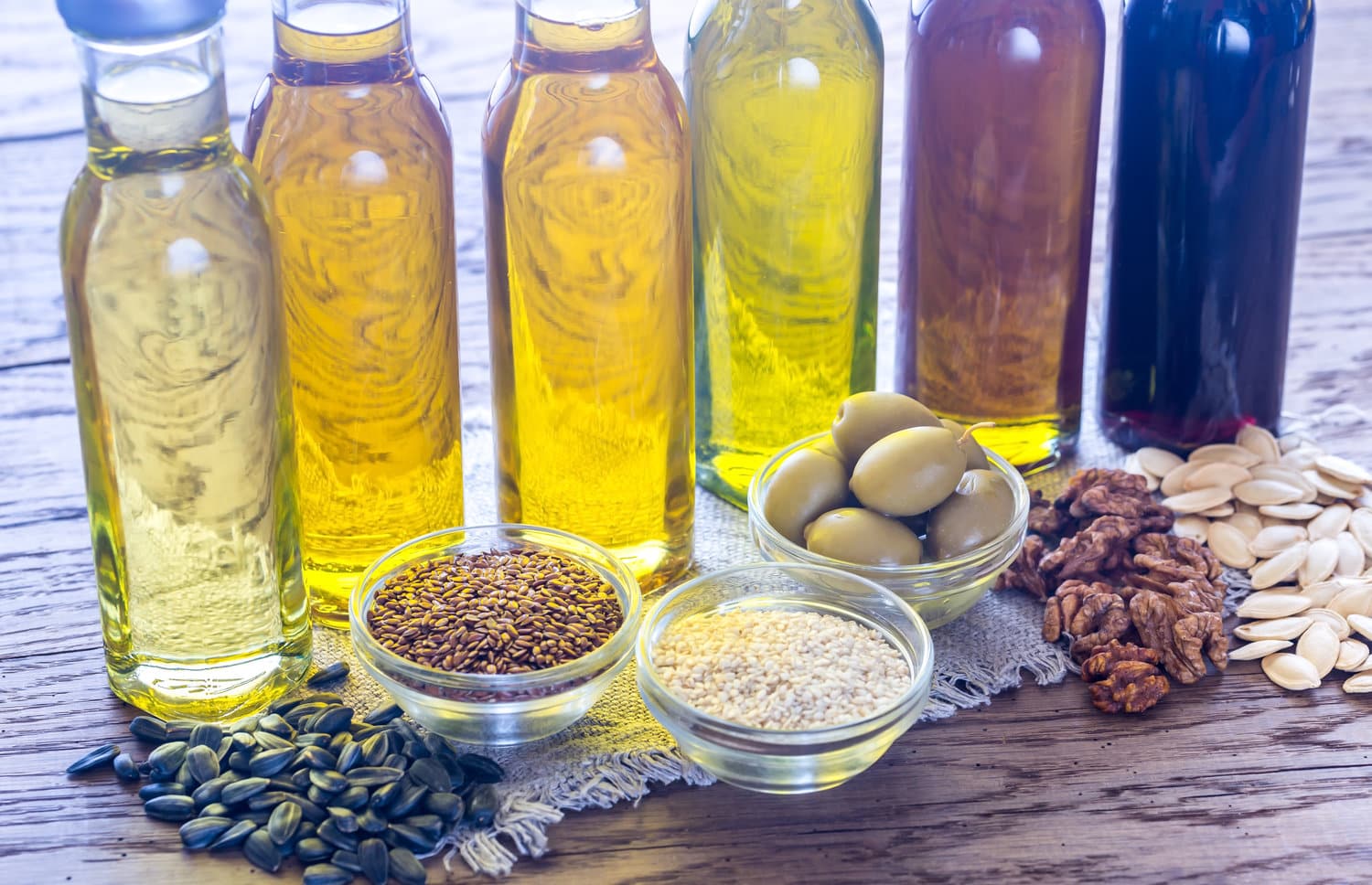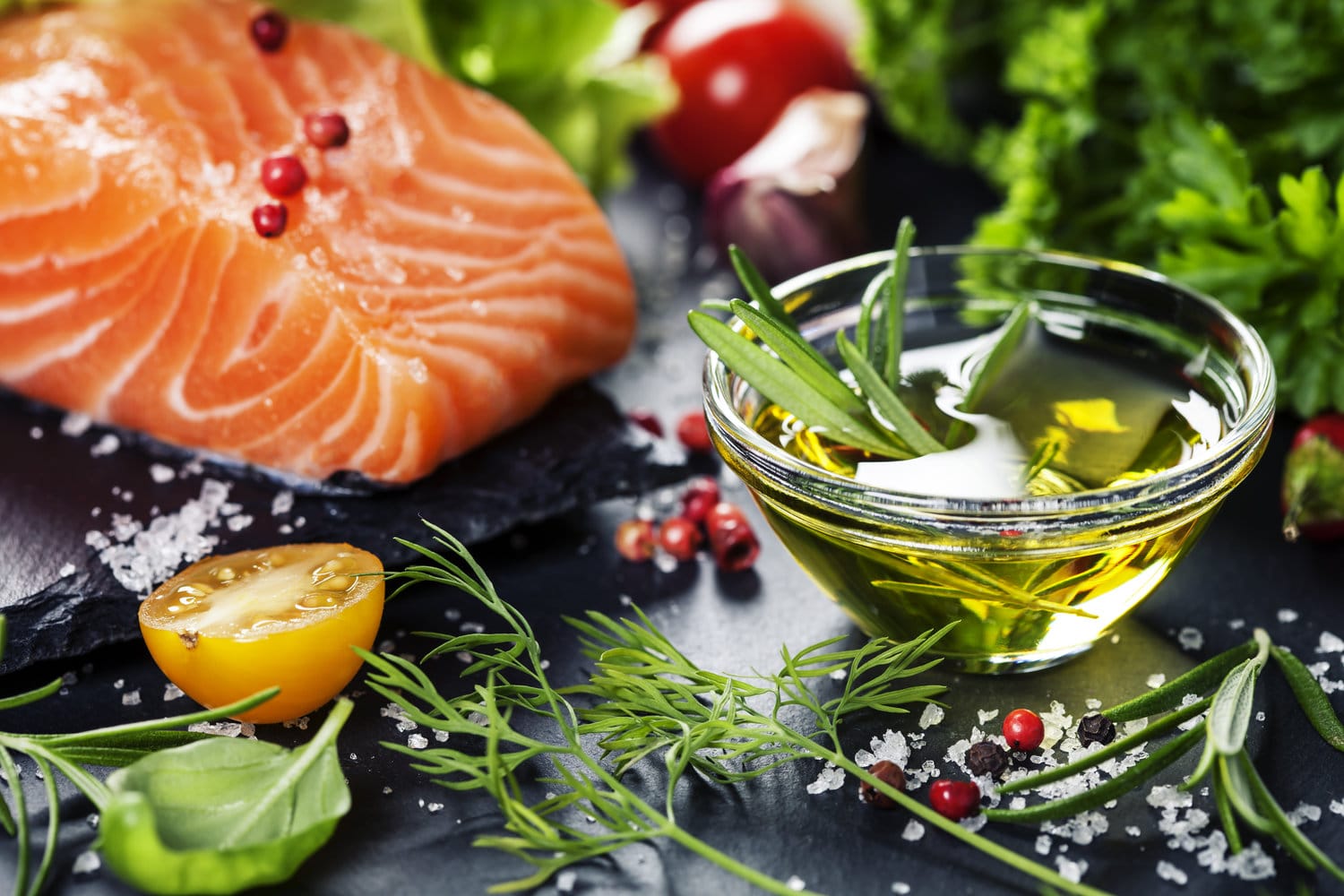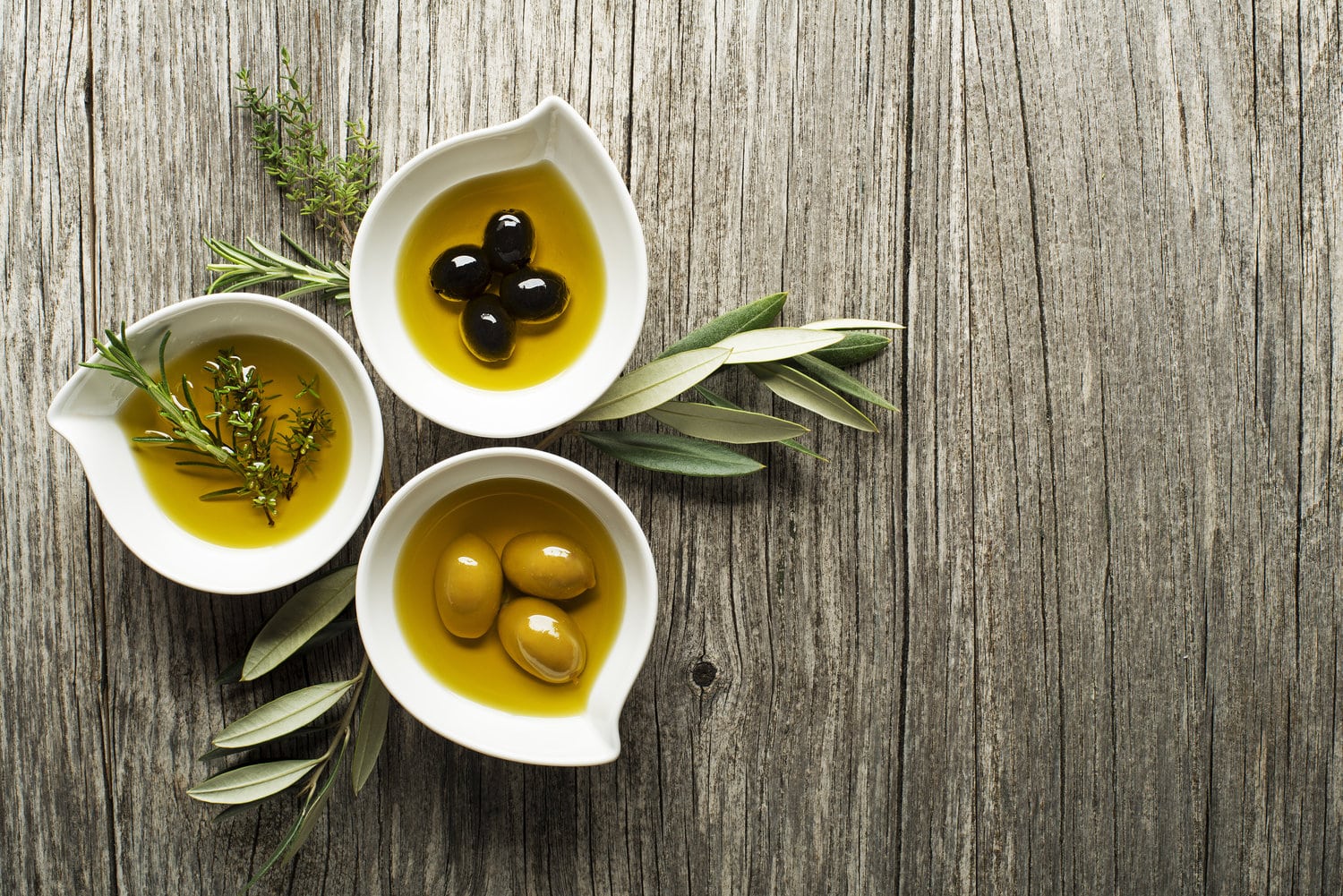With the latest popularity of the Ketogenic diet many people are wondering what are the healthy fat foods?
Understanding fats and oils has never been so important.
You might wonder why fat is even important. On a physical level ultimately health comes down to nutrient absorption, the release of waste and toxins, and energy production. It is your cells that are responsible for this. Your cells are enclosed in a membrane made up mostly of fatty acids, phospholipids, proteins, and some carbohydrate molecules. The membrane allows the good nutrients in and makes sure the bad waste gets out.
Because the cell membranes are made up of predominately fatty acids and phospholipids, if you are not eating the right fats and oils then they will not be as healthy as they can be. This can lead to problems with the right stuff getting into your cells and the bad stuff getting out.
This is why eating the right fats and oils is crucial for good health!
It is important to get a good variety of healthy oils and fats. It is equally important to avoid the bad oils and fats!
There are 3 main categories that fats can fall into: Saturated, Mono-Unsaturated, and Poly-Unsaturated. Yeah, that sounds like jargon but these 3 categories have major differences in how they are utilized in the body AND how much you need of each type.
The main type of fatty acids that we absolutely need are Essential Fatty Acids (EFAs) (these are polyunsaturated). They should be consumed on a regular basis. The body cannot produce them so just like vitamin C, for example, if you don’t eat them you will eventually fall ill due to deficiency.
There are only 2 EFAs; Alpha-Linolenic Acid (ALA) and Linoleic Acid (LA). The most abundant and direct source of ALA is flax seed oil and of LA is sunflower and safflower oils. Please read more below on how to consume these EFAs.
PLEASE NOTE: EFAs do not come from fish oil, I repeat, they do NOT come from fish oil. Fish oil provides EPA and DHA, which are NOT essential fatty acids. They are conditionally essential, meaning your body can make them if you have the right raw materials, and those raw materials are Alpha Linolenic Acid, B6, and zinc, to name some of the most important ones.
The following is a list of healthy fat foods and information about each:

Healthy Fat Sources
Polyunsaturated Fatty Acids (PUFA)
PUFA oils are extremely heat, time, air, and light sensitive so they should be bought in dark glass bottles from manufacturers that do not use heat or solvents and that ship the items cold and as fresh as possible. Only buy from stores that store the oils in refrigerators. Use raw on salads and veggies or however you like but Do Not Heat Ever!! Store in the refrigerator with cap on and discard opened bottle after 12 weeks.
PUFA oils fall under the category of Omega 3s and Omega 6s.
Omega 6
Linoleic Acid (LA)
Good sources include organic sunflower, hemp, pumpkin, and sesame seeds as well as their unrefined, expeller-pressed/mechanically extracted oils and butters, walnut oil, and walnuts. Try rotating different types of LA-rich oils.
Flora Brand is an excellent source for these oils. Oilee is another brand that is small-batch, cold-pressed, homemade, organic, and bottled in glass that I highly recommend.
BodyBio also has a product called Balance Oil, which is a mixture of safflower or sunflower and flax seed oils (so it has both omega 6 and omega 3).
Gamma-Linoleic Acid (GLA)
Sources include primrose and borage oils. GLA is also synthesized from LA by the body (however this pathway can be sluggish in many people). BodyBio has good quality Evening Primrose Oil in liquid and softgel.
Arachidonic Acid (AA)
Good sources include grass-fed dairy and meat and pasture-raised eggs. Cell membranes should contain about 14% AA. Even though you may have heard this type of fatty acid is bad for you, it is a necessary building block for all cells. Only when in excess is it bad.
Omega 6 fatty acids have been demonized in our culture. But it’s all about QUALITY! If you stick to the good quality sources listed here you will avoid those issues. See below under “Bad Fat Sources” about the bad omega 6 sources for more info on this.

Omega 3
Alpha-Linolenic Acid (ALA)
Sources include organic, unrefined, expeller-pressed/mechanically extracted flax oil, freshly ground flax seeds, walnuts, soaked chia seeds, and leafy greens.
This kind of omega fatty acid should be balanced with the LA mentioned above. Remember, Do Not Heat! Flora Brand is an excellent source of flaxseed and walnut oils. Oilee is another brand that is small-batch, cold-pressed, homemade, organic, and bottled in glass that I highly recommend. And BodyBio’s Balance Oil is also an excellent source.
EPA/DHA
Sources include oily fish and fish oil.
I highly encourage everyone to consume wild-caught oily fish such as salmon, herring, and sardines on a regular basis. This is the safest way to consume EPA and DHA. Fish oil can also be used to supplement EPA and DHA but should only be done in small amounts for temporary periods of time and not on a regular basis, unless absolutely necessary. Remember, Do Not Heat! Only supplement with EPA/DHA when directed by a doctor.
Saturated Fatty Acids (SFA)
Sources include organic butter, ghee, cream, cheese (preferably raw), yogurt, kefir, red meat, and coconut oil.
Most of the modern world has bought the lie that these fats are inherently bad and should be minimized at all costs. The story is much more complicated than that. In general, for healthy people, eating these fatty acids in moderation is usually fine. Some people are “hyper-absorbers” of cholesterol and therefore should restrict saturated fat and cholesterol-rich foods. Other people have a lot of inflammation or liver stress and should also minimize them. Really it comes down to the individual but to flat out demonize these types of fats is misguided and overly simplistic.
Monounsaturated Fatty Acids (MUFA)

Sources include coconut, olives, cold-pressed or mechanically extracted virgin coconut oil, cold-pressed, extra-virgin olive oil, macadamia nut oil or nuts, almonds or almond oil, avocado, chicken fat, bacon fat, and lard.
Olive oil that is organic, extra-virgin, and first cold-pressed is ideal. When the olive oil is truly extra-virgin (don’t always go by labels, there is a great article on this here: http://chriskresser.com/is-it-safe-to-cook-with-olive-oil) you can safely heat up to 350 degrees.
Macadamia Nut oil has a higher smoke point than olive oil (450 degrees). To ensure you are getting true extra virgin olive oil 100% of the time purchase olive oil from Olive Oil of the World. Ersilia Moreno hand-picks her oils and only sells oils produced with the proper methods and equipment. Chicken skin is also rich in MUFA and bacon has some too.
A great practice is to make your own salad dressing using a combination of oils from above.
My favorite salad dressing looks like this:
- 4 tbps. extra virgin olive oil
- 3 tbsp. sunflower oil (from Oillee)
- 1 tbsp. flaxseed oil
- 1 tbsp. walnut or avocado oil
- 1 tbsp. raw apple cider vinegar
- 1 tsp. stone-ground mustard
- 1 tbsp. sea salt
- 1 tbsp. minced raw garlic
Mix all ingredients in a jar. This dressing will last 1-3 days, depending on the size and frequency of your salads. Store in covered glass in the refrigerator.
For cooking
For higher heat (above 350 degrees) use butter, ghee, coconut oil, and macadamia nut oil. These are not as sensitive to heat damage. It is never a good idea to fry food so try to avoid this practice as much as possible. For lower heat cooking; olive oil, lard, bacon fat, and tallow are good. Any oil is sensitive to heat and should never be brought to smoking point.
Bad Fat Sources
The following oils and fats should be avoided at all times
- Soybean, corn, cottonseed, canola, “vegetable” oils (including Earth Balance and similar foods)
- Margarine
- Hydrogenated, partially-hydrogenated oils
- Deep-fried foods in general
- All synthetic trans-fats
- Watch for supposedly healthy oils like sunflower and safflower in processed foods. These are just as damaging as trans-fats or soybean oil because they are heat-treated.
- Manufactured “High-Oleic” oils such as sunflower (sunflower does not naturally contain oleic acid)
As mentioned above, omega 6 fatty acids have been demonized. One reason for this is that the food industry has inundated our systems with poor-quality omega 6 oils. Almost any processed food you buy (EVEN organic!) is made with cheap vegetable oils, canola oil, sunflower or safflower oils. The problem is that these oils are highly sensitive to heat. Typically what happens is that the oil is first heat-treated and cleaned with hexane, then they dump in some Vitamin E to offset the high level of oxidation that has occurred, otherwise the oil would be inedible (ew). Then they dump that into some processed cracker or granola bar where it is heated yet again.
You end up with highly rancid, highly oxidized oil that acts like plastic in your cell membrane, reducing oxygen and nutrient flow into the cell!! Yikes!!
One way to avoid this is to minimize processed foods (especially you’ll see them in the carby foods). The other is to avoid vegetable oils, canola oils, and any other PUFAs that have been heat treated (including the supposed safe for cooking “high-oleic stuff”).
Another reason why omega 6 fatty acids have been demonized is because of the huge consumption of factory farmed conventional meat, dairy, and eggs in this country. These foods are very high in arachidonic acid, which has been shown to increase inflammation and oxidative stress in the body. The way to avoid is this is to mostly consume grass-fed meat and dairy and pasture-raised eggs, and to do so in moderation.
Balance is Key
Get a good balance of omega fatty acids. This means obtaining linoleic acid (LA) and alpha-linolenic acid (ALA) in the right proportion, which is 4:1. Balance Oil by BodyBio and the Blend oil by O
ilee are both great sources of the mixture of these oils in the right proportions.
ALA leads to the production of EPA and DHA, which are important for many functions in the body including brain, central nervous system, and immune function. LA leads to the production of DGLA, GLA, and AA which are extremely important as well. The conversion to these molecules is sluggish even in the best of conditions. Therefore, it may be advisable to consume good sources of these oils as well. But please supplement only on the advice of your practitioner.
In order to get a good balance of all of these fatty acids it is important to consume a variety of the healthy fats listed above.
Be very careful to not over-supplement with omega-3s such as flaxseed oil or fish oil. It is recommended that you have your fatty acid plasma profile tested annually (Bioreference Labs).
